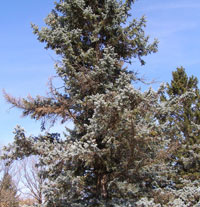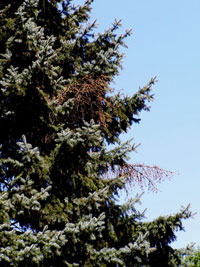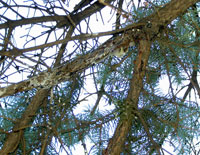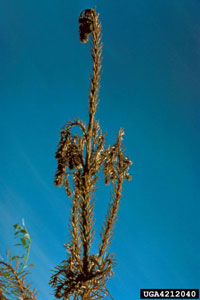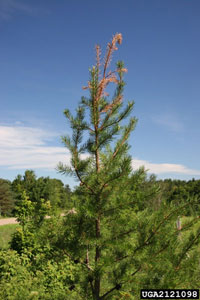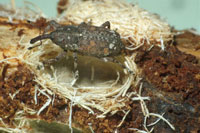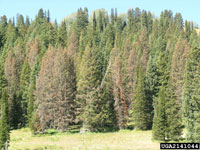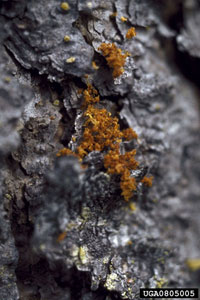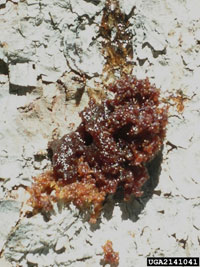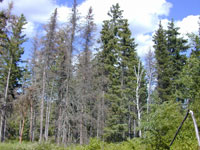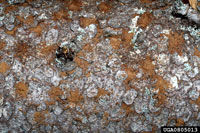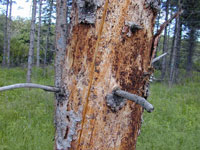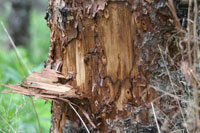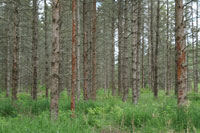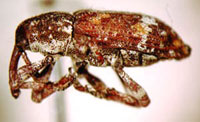Extension > Garden > Diagnose a problem > What's wrong with my plant? > Evergreen Trees and Shrubs > Spruce > Dead branches or leader
Spruce > Trunk or branches > Dead branches or leader
1 of 5
Cytospora canker
Leucostoma kunzei
- Needles on one or more branches turn completely brown or purplish brown then fall off
- Scattered dead branches occur throughout the tree, often starting on the lower branches and then spreading upward
- Clear to white resin encrusted cankers on infected branches
- Common on Colorado blue spruce, or very stressed spruces
- More information on Cytospora canker
2 of 5
White pine weevil
Pissodes strobi
- Terminal leader dead or dying, curled into a shepherd’s crook
- Branches in whorls near the top may also wilt and die
- Repeated attacks can leaves trees looking bushy
- Drops of pitch can be seen on terminal shoots in spring
- Larvae are whitish, legless and up to 2/5 inch long
- Adults are 1/4 inch long, brown body with patches of white and orangish brown scales
- More information on White pine weevil
3 of 5
Spruce beetle
Dendroctonus rufipennis
- Most commonly reported in older white spruce in northern Minnesota, particularly along the North Shore
- Prefers larger trees, 12 inch diameter trees or larger
- Needles discolor yellowish green to reddish brown
- Reddish brown sawdust around exit holes and on the bark and on the ground
- Pitch tubes develop around exit holes
- Trees eventually die
- Beetles can build-up populations in trees knocked down in wind or ice storms
- Adult beetles are 1/4 inch long and black to reddish-brown; larvae are small, white legless grubs
- More information on Spruce beetle
4 of 5
Northern spruce engraver beetle
Ips perturbatus
- Reddish brown frass around exit holes and on the bark and on the ground
- Found mostly on white spruce in plantations, rarely in home landscapes
- Needles discolors to yellowish-green to red, branches can die back
- Creates distinctive galleries under bark
- Adult
- More information on Northern spruce engraver beetle
5 of 5
Small spruce weevil
Pissodes rotundatus
- Found mostly in spruce plantations, rarely in home landscapes
- Needles discolor yellowish green to reddish brown
- Can find woodpeckers attacking infested trees
- Often found in dead or dying spruce, they are generally regarded as secondary invaders, they are not often the cause of tree death
- Chip cocoons are diagnostic for this weevil (found under bark)
- Adults are 1/4 inch long, dark brown to black body
- Larva is small legless whitish grub



